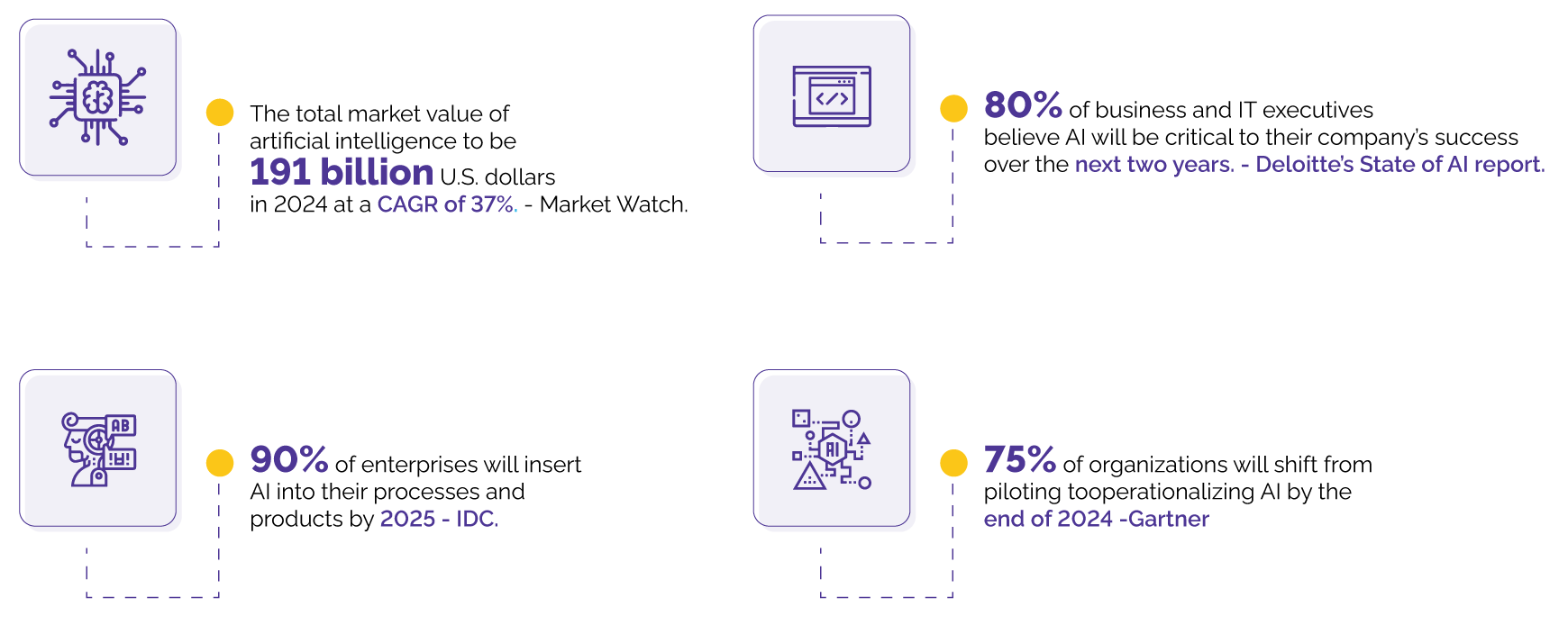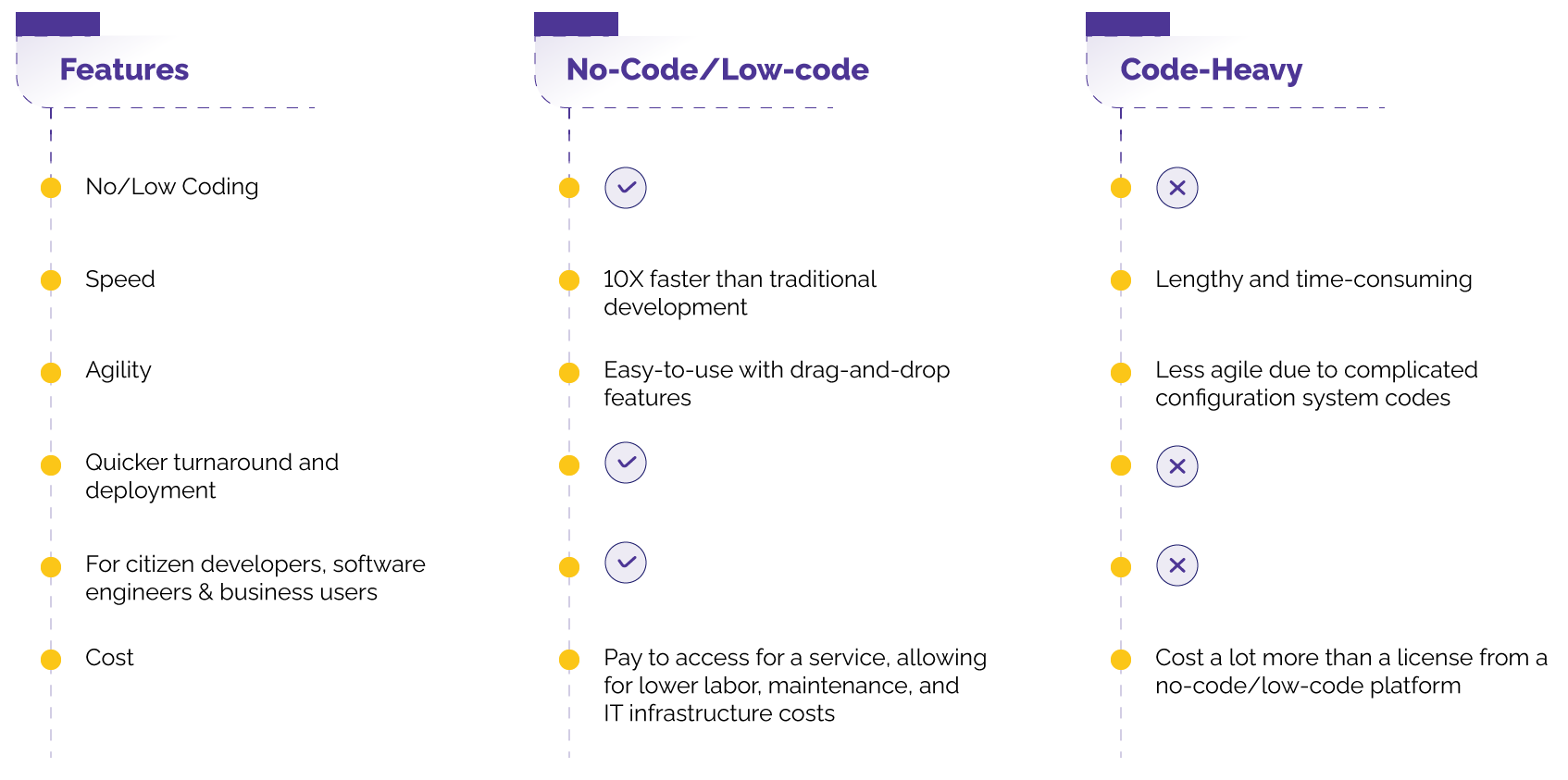Top 7 AI and Data Analytics Trends to look forward in 2022
There’s no doubt that AI and analytics are already changing how businesses operate across different industries- whether through task automation, insight generation, or other use cases. In 2022, it will continue to transform the enterprises in the way they live and work, and leaders will shift their focus to adopting AI solutions that are more sustainable and scalable.
What 2022 is going to look like for AI and Data Analytics?
In 2021, many enterprises saw the adoption of AI in at least one function across major industries. According to McKinsey Global Survey 2021, 57 percent of respondents report AI adoption, up from 45 percent in 2020.
In 2022, preparation is the key to AI and Analytics success. It may be tempting to push AI into legacy environments as quickly as possible; it would be wiser to adopt a more careful and thoughtful approach. AI is only as good as the data it can access, so shoring up both infrastructure and data management and preparation processes will play a substantial role in adopting future AI-driven initiatives.
From a technology perspective, there are many discussions around low-code/no-code AI platforms and architectural approaches to analytics, like Data Fabric, composable data, and analytics, workforce augmentation, etc. Let’s look at some interesting statistics for this year.
Top AI and Data Analytics trends to keep you on the radar
Many new developments and breakthroughs will continue to push the boundaries of what’s possible. Here are the key areas where those breakthroughs will occur in 2022:
#1 Data Fabric will be a key foundation for the enterprise to establish a frictionless data journey
As the data increases in volume and becomes increasingly complex, and digital business accelerates, data fabric creates an agile and data-centric environment that responds quickly to the fast pace of change. According to Gartner, the data fabric concept enables frictionless access to and sharing data in a distributed data environment. It consists of end-to-end data integration and management solution that unlocks the potential of the data and reduces data to insights journey from any environment- cloud, on-premises, or edge. It reduces the time for integration for design by 30%, deployment by 30%, and maintenance by 70% because the technology designs draw on the ability to use/reuse and combine different data integration styles.
#2 Composable data and analytics fosters agility
Enterprises have more than one standard tool for analytics and BI. So, introducing new technology or tool becomes a costly affair. Composable data and analytics use/reuse components from multiple data, analytics, and AI solutions to reduce costs, boost deployment speed, and encourage collaboration. It uses AI across business intelligence, data management, and predictive analytics, evolving the analytics capabilities of an organization and enabling leaders to connect data insights to business actions.
#3 Improved decision intelligence for enterprise-wide decision support
Decision intelligence uses emerging technologies such as AI/ML to process large amounts of data to quickly extract meaningful insights for enterprises needed to drive actions for the business. In 2022, decision intelligence has the potential to make assessments not only better, but also faster, given that machine-generated decisions can be processed at speeds that humans cannot achieve.
#4 Rise of Low-code and No-code technologies
According to Gartner, by 2023, over 50% of medium to large enterprises will have adopted low-code or no-code as one of their strategic application platforms. Also, it predicts that low-code platforms will be responsible for more than 65% of application development activity by 2024. The low-code and no-code technologies enable businesses to keep up with the rapidly changing technology landscape through innovation and by empowering business users and technical programmers to build applications with little to no coding.
No-code/Low-code vs. Code-Heavy: What’s the difference?
#5 Ethical AI and Ethical Data Analytics become tangible
As enterprises power AI advancements, the lack of governmental oversights has pushed the debate over the ethics of responsible AI to the fore. In 2022, we will see how ethical AI and ethical data analytics will continue to play a significant part in the simulation of innovation and economic growth, since more organizations will realize the need for responsible tech. Fairness of algorithms and data transparency are issues that will need to be addressed in the coming years as AI adoption is more widespread than ever. It will hopefully work its way towards policymakers as well.
#6 AI will evolve more rapidly, expanding and impacting every business process
While in 2021, most of the enterprises were still in the proof-of-concept phase of AI. 2022 will see a shift towards AI-first approaches. AI applications will be at the forefront of enterprise strategies. As AI/ML models become the norm, companies will expand AI to become every part of the department and impact every business process.
#7 AI will become more widespread and accessible
Previously in 2021, only big players such as Amazon, Google, Microsoft, etc., had the deep pockets to make AI/ML models a reality. In 2022, there will be more off-the-shelf technology to make AI/ML models more accessible, like readily available functionality to make applications talk, convert speech to text, and other industry-specific use cases. Also, modern workplaces are evolving with AI getting incorporated into their processes. Humans and machines will work alongside each other for quicker results. This creates a great combination of human innovation and machine intelligence.
In 2022, AI and data analytics will not only be more prevalent but will also be more strategic. It will continue to be used to achieve productivity gains. In the coming years, AI will also be used to rethink and redesign products, services, business models, and overall strategy.
This year, the challenges of integrating, cleaning, and processing data will continue. However, at the same time, there will be a flood of more generic AI and data-analytics platforms that will help replace manual tasks, freeing up data scientists for strategic tasks. As today’s enterprises strive to be data-driven and demand that the data be most efficient to provide a better experience, more enabling technologies will be available to ease the transition and adoption of AI across the organization.
Do you agree with the points discussed in the article? If yes, which of the trends do you plan to adopt in your organization? Feel free to let us know your thoughts and comments in the section below if we’ve missed any important points.
Derive Maximum Value From Your AI Investments





